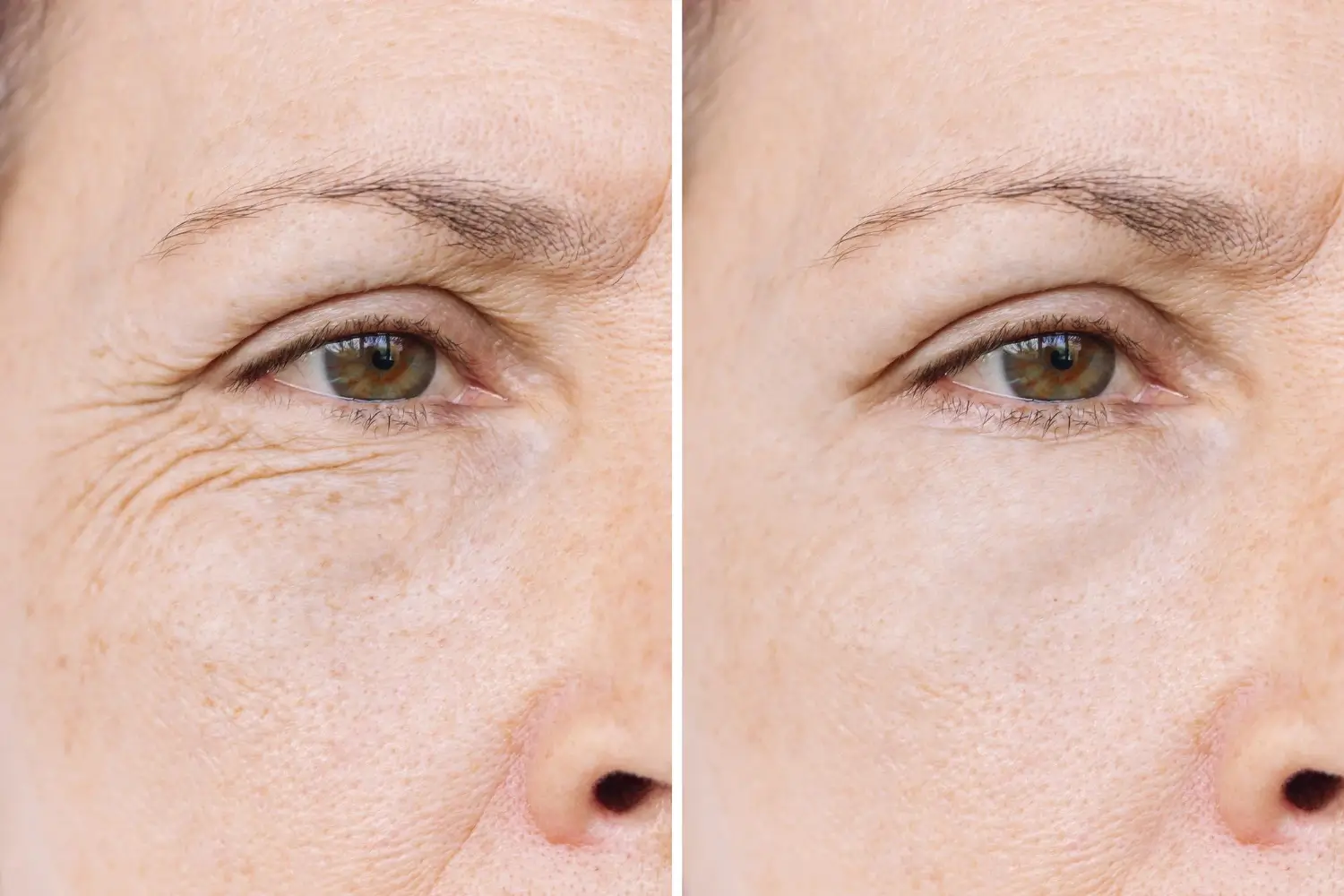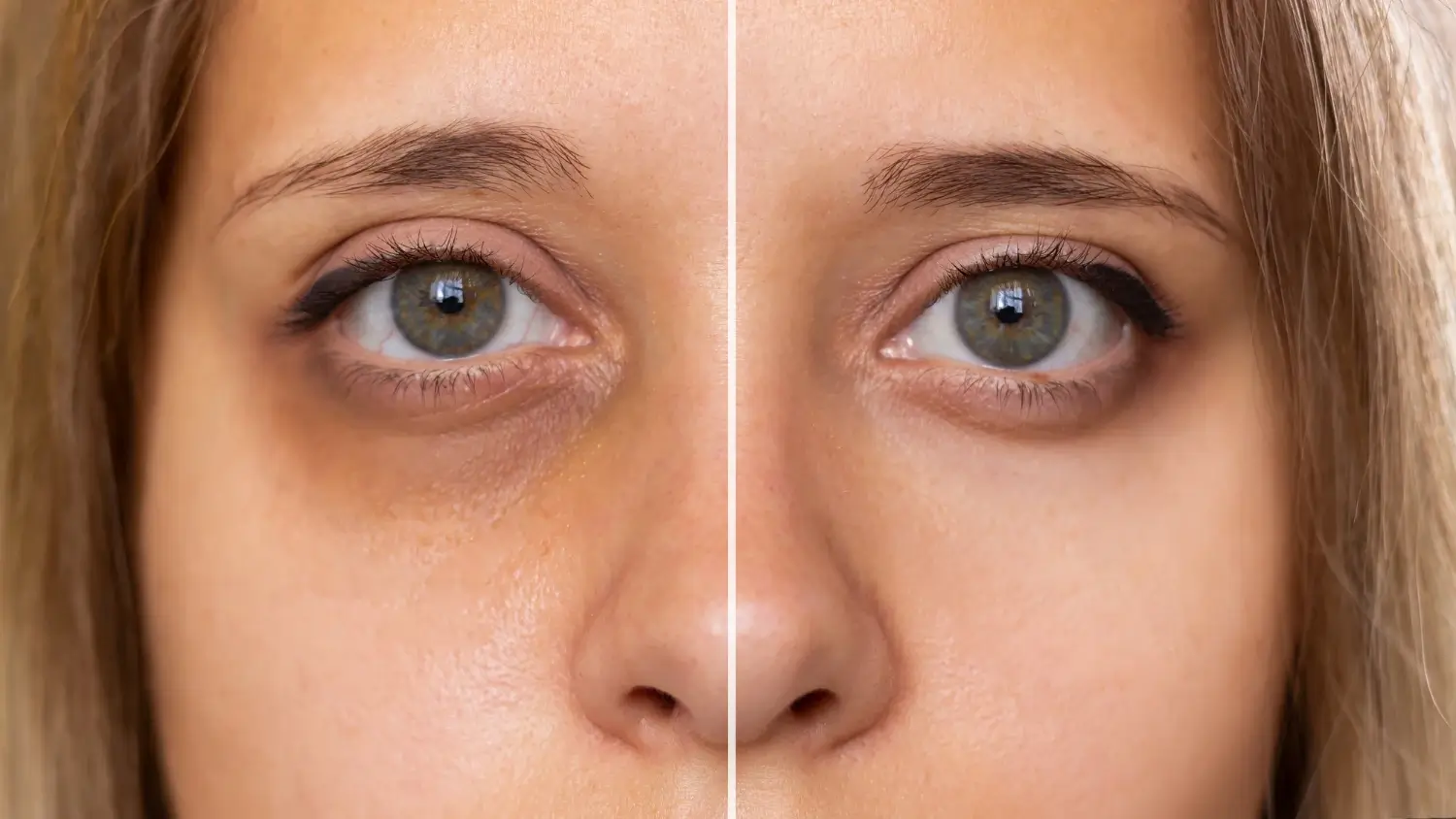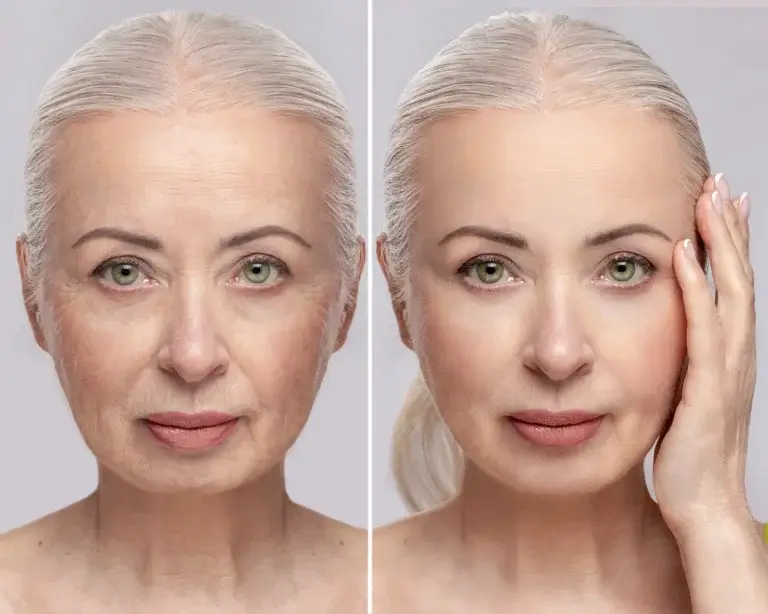Why BOTOX® Around the Eyes Has Become So Popular
The delicate skin around our eyes is often the first to show signs of aging. When we smile, laugh, or express emotions, the muscles around our eyes contract, eventually leading to the formation of crow’s feet and other fine lines. These wrinkles can make us look tired or older than we feel, which is why BOTOX® treatments around the eyes have become increasingly popular among people seeking rejuvenation without surgery.
BOTOX® works by temporarily relaxing the muscles responsible for dynamic wrinkles, providing a refreshed appearance that looks natural when administered by a skilled medical professional. The treatment’s minimally invasive nature, quick procedure time, and minimal downtime have contributed to its widespread appeal among patients looking to reduce visible signs of aging around the eye area.
How BOTOX® Works to Refresh the Eye Area
BOTOX® Cosmetic (onabotulinumtoxinA) is derived from botulinum toxin, which works by blocking nerve signals to specific muscles. When injected around the eyes, BOTOX® prevents these muscles from contracting, thereby reducing the appearance of wrinkles and fine lines that form from repeated facial expressions.
The treatment particularly targets:
- Crow’s feet lines at the outer corners of the eyes
- Fine lines under the eyes
- Brow area to create a subtle brow lift effect
- Glabella region (between eyebrows) to address frown lines
Unlike more invasive procedures such as eyelid surgery, BOTOX® provides improvement without significant downtime or risk. The injectable works by selectively relaxing the muscles that cause wrinkles while preserving your natural facial expressions when administered correctly.

Real BOTOX® Before and After Eyes: What to Expect
Typical Results for Crow’s Feet
When BOTOX® is injected to treat crow’s feet, patients typically notice a significant softening of the lines that radiate from the outer corners of the eyes when smiling. Real patient before and after photos demonstrate how these wrinkles and lines become less pronounced, creating a smoother appearance around the eyes while maintaining natural facial expressions.
In most cases, patients can expect:
- Visible reduction in crow’s feet lines within 3-7 days
- Full results appearing by 14 days post-treatment
- Natural-looking improvement that preserves expressiveness
- Results that last approximately three to four months
Forehead Lines and Brow Lift Effects
BOTOX® injections in the frontalis muscle (forehead) and around the brow area can create a subtle brow lift effect while reducing horizontal forehead lines. This complementary treatment enhances results around the eyes by elevating the brow position slightly, opening up the eye area and creating a more refreshed, alert appearance.
Before and after photos show how strategic BOTOX® placement can help:
- Reduce forehead wrinkles that contribute to a tired appearance
- Create symmetry between eyebrows
- Elevate the brow to open up the eye area
- Address the “11 lines” between eyebrows (glabella region)
Treating Frown Lines with BOTOX®
Frown lines between the eyebrows (glabellar lines) often accompany eye area aging. BOTOX® treatment in this area complements eye-area injections by creating a more harmonious upper face appearance. When combined with crow’s feet treatment, patients enjoy comprehensive rejuvenation that addresses multiple signs of aging simultaneously.
Your BOTOX® Consultation: What to Discuss with Your Provider
Assessing Your Eye Area Concerns
A thorough consultation with a qualified dermatologist or cosmetic provider is essential before receiving BOTOX® around the eyes. During this appointment, your provider will:
- Evaluate your facial anatomy and muscle movement
- Assess the depth and location of wrinkles around your eyes
- Discuss your aesthetic goals and expectations
- Examine your medical history for potential contraindications
- Take “before” photos for comparison purposes
Be prepared to discuss any previous cosmetic treatments, medications you’re taking, and specific concerns about your eye area. This information helps your provider develop a customized treatment plan that addresses your unique facial structure.
Setting Realistic Expectations
Understanding what BOTOX® can and cannot achieve is crucial for satisfaction with your results. While BOTOX® effectively treats dynamic wrinkles caused by muscle movement, it cannot:
- Address skin laxity or sagging
- Improve skin texture or tone
- Eliminate static wrinkles that are present at rest
- Treat eye bags or puffiness
- Replace the effects of eyelid surgery for severe drooping
Your consultation should include a frank discussion about whether additional treatments like fillers might be recommended to achieve the results you want.

The BOTOX® Treatment Process for the Eye Area
Before Your Eye Area BOTOX® Treatment
Preparation for BOTOX® treatment around the eyes is minimal, but certain precautions can help reduce the risk of bruising and ensure optimal results:
- Avoid blood-thinning medications and supplements (like aspirin, ibuprofen, fish oil) for 1-2 weeks before treatment, if approved by your primary doctor
- Refrain from alcohol consumption 24 hours before your appointment
- Arrive with a clean face, free of makeup
- Inform your provider of any changes in your medical history since your consultation
During the BOTOX® Injection Procedure
The BOTOX® injection process for the eye area typically includes:
- Cleansing of the treatment area
- Marking of injection sites to ensure precision
- Brief, targeted injections using a very fine needle
- Gentle pressure applied to minimize bruising
The entire procedure is usually done within 10-15 minutes, making it convenient even for those with busy schedules. Most patients report minimal discomfort, describing the sensation as a slight pinch or pressure at each injection site.
Post-Treatment Care for Optimal Results
After receiving BOTOX® around the eyes, follow these aftercare instructions:
- Remain upright for at least 4 hours
- Avoid touching, rubbing, or applying pressure to the treated area
- Skip strenuous exercise for 24 hours
- Refrain from facials, saunas, and hot showers on the day of treatment
- Apply cold compresses if needed to reduce swelling
Following these guidelines helps ensure proper distribution of the BOTOX® and optimal results. Your provider may provide additional specific instructions based on your treatment plan.
Timeline: When Will You See Results from Eye Area BOTOX®?
Initial Changes and Development of Full Results
BOTOX® results develop gradually rather than immediately:
- Days 1-3: You may notice the beginning of muscle relaxation
- Days 3-7: Wrinkle reduction becomes more apparent
- Days 7-14: Full results develop as the BOTOX® fully binds to receptors
This gradual onset creates natural-looking results that don’t appear obvious or “frozen.” Regular follow-up appointments help your provider assess your response and make any necessary adjustments for future treatments.
How Long Does BOTOX® Last Around the Eyes?
BOTOX® results around the eyes typically last three to four months, though this can vary based on:
- Your metabolism (faster metabolizers may break down BOTOX® more quickly)
- The specific area treated (crow’s feet may last a bit longer than other areas)
- The dosage used
- Whether you’re a first-time or repeat BOTOX® patient
With regular treatments, some patients find that results begin to last longer as the muscles become conditioned to being relaxed. Your provider can help establish an optimal treatment schedule based on how your body responds.
Combining BOTOX® with Other Treatments for Enhanced Results
BOTOX® and Fillers: The Perfect Pair
For comprehensive rejuvenation around the eyes, many practitioners recommend combining BOTOX® with dermal fillers. While BOTOX® addresses dynamic wrinkles caused by muscle movement, fillers can:
- Restore volume loss in the tear trough area
- Smooth static wrinkles that remain when facial muscles are at rest
- Improve skin texture and hydration
- Address hollowing that contributes to a tired appearance
Before and after photos of combination treatments typically show more dramatic improvement than either treatment alone, especially for patients with multiple aging concerns.
Other Complementary Treatments
In addition to fillers, other treatments that enhance BOTOX® results include:
- Topical retinoids to improve skin texture and tone
- Chemical peels to address surface irregularities
- Laser treatments for skin resurfacing
- Microneedling for collagen induction
- Medical-grade skincare regimens
These complementary approaches can address aspects of aging that BOTOX® alone cannot target, creating more comprehensive rejuvenation.
Potential Side Effects and Safety Considerations
Common Side Effects of Eye Area BOTOX®
Most side effects from BOTOX® around the eyes are mild and temporary:
- Minor bruising at injection sites
- Slight swelling or redness
- Temporary headache
- Dry eyes (uncommon)
These effects typically resolve within a few days and can often be minimized with proper technique and aftercare.
Rare But Important Considerations
Though uncommon with proper injection technique, more significant side effects can include:
- Droopy eyelid (ptosis) if BOTOX® migrates to the wrong muscles
- Asymmetry in facial expression
- Difficulty closing eyes completely
- Double vision
Working with an experienced, qualified injector is the best way to minimize these risks. Choose a provider who specializes in facial anatomy and has specific training in periocular BOTOX® administration.
Choosing the Right Provider for Your Eye Area BOTOX®
Qualifications to Look For
The delicate eye area requires special expertise for BOTOX® administration. When selecting a provider, look for:
- Board certification in dermatology, plastic surgery, or other relevant specialty
- Specific training and experience with BOTOX® around the eyes
- Before and after photos of previous patients
- Knowledge of potential complications and how to address them
- A thorough consultation process that addresses your specific concerns
Questions to Ask During Consultation
Prepare for your consultation with questions such as:
- How many BOTOX® treatments do you perform weekly?
- What is your approach to treating the eye area specifically?
- What results can I realistically expect?
- How do you handle complications if they arise?
- What is your touch-up policy?
A qualified provider will welcome these questions and provide clear, straightforward answers that help you feel confident in your decision.
Why Medical Professionals Trust Pipeline Medical for BOTOX® Supply
Medical professionals seeking reliable, authorized BOTOX® supplies at competitive supply chain procurement rates consistently turn to Pipeline Medical. As an authorized marketplace of BOTOX® Cosmetic, Pipeline Medical ensures that medical professionals receive genuine, properly stored product directly from authorized channels.
Working with Pipeline Medical offers several advantages:
- Competitive supply chain procurement that improves practice profitability
- Guaranteed authentic product with proper chain of custody
- Streamlined ordering process for busy medical practices
- Expert support from procurement specialists who understand cosmetic practice needs
- Reliable availability even during industry shortages
By partnering with Pipeline Medical for BOTOX® procurement, practitioners can focus on providing exceptional patient care while ensuring they’re using high-quality, authentic product for every treatment.
Patient FAQs About BOTOX® Around the Eyes
Is BOTOX® Safe for the Delicate Eye Area?
When administered by a qualified professional, BOTOX® has an excellent safety profile for the eye area. The FDA has approved BOTOX® Cosmetic specifically for crow’s feet lines, and the treatment has been used safely in this area for many years. The key to safety lies in proper technique, appropriate dosing, and thorough understanding of periocular anatomy.
How Much Does Eye Area BOTOX® Cost?
BOTOX® pricing varies based on geographic location, provider expertise, and the number of units required. Generally, treating crow’s feet typically requires 10-15 units per side, with costs ranging depending on your treatment and location.. A comprehensive eye area treatment including crow’s feet and brow lifting effects typically ranges from $300-$600 per session.
Many providers offer package pricing for regular maintenance treatments or combination therapies with other procedures.
Can BOTOX® Fix Eye Bags or Dark Circles?
BOTOX® is not directly effective for addressing eye bags or dark circles, as these concerns are typically caused by factors like volume loss, skin thinning, or pigmentation rather than muscle activity. However, by treating surrounding areas and creating a subtle brow lift effect, BOTOX® can indirectly improve the appearance of the entire eye region.
For concerns like eye bags or dark circles, complementary treatments such as dermal fillers, chemical peels, or topical treatments may be recommended alongside BOTOX® for comprehensive rejuvenation.
Can BOTOX® Help You Look Younger Without Surgery?
Yes, BOTOX® is a popular non-surgical treatment that can help reduce facial wrinkles and rejuvenate your appearance. By targeting dynamic wrinkles—those caused by repetitive facial expressions—BOTOX® smooths wrinkles around the eyes, forehead, and even the jawline, helping you look younger with little to no downtime.
What Should I Know About Getting BOTOX® for Forehead Lines and Crow’s Feet?
When getting BOTOX® for forehead lines and crow’s feet, it’s essential to choose a provider who understands facial anatomy. These areas are highly expressive, and proper injection technique is key to achieving natural-looking results that still allow for wrinkles when smiling and expressing emotion.
Are There BOTOX® Options for Smile Lines and Marionette Lines?
While BOTOX® is highly effective for treating dynamic wrinkles, marionette lines and deep smile lines may benefit more from injectables like dermal fillers. However, BOTOX® can still play a role in softening muscle movement around the mouth and enhancing other treatments like a lip flip to subtly reshape the lips.
Who Is a Good Option for BOTOX® Cosmetic Treatments?
Patients may consider BOTOX® cosmetic treatments if they want to reduce wrinkles, treat muscle spasms, or manage excessive sweating (hyperhidrosis). Those looking for an accessible, minimally invasive way to rejuvenate their appearance without surgery often find BOTOX® to be a good option, especially with the right provider guiding their care.
Conclusion: Achieving Natural-Looking Results with Eye Area BOTOX®
BOTOX® around the eyes has revolutionized non-surgical facial rejuvenation by offering an accessible, effective solution for one of the earliest and most noticeable signs of aging. When administered by skilled medical professionals using high-quality product from trusted marketplaces like Pipeline Medical, patients can achieve refreshed, natural-looking results that enhance their appearance while preserving expressiveness.
The key to satisfaction lies in realistic expectations, choosing the right provider, and understanding that BOTOX® is often most effective as part of a comprehensive approach to facial rejuvenation. By following the guidelines outlined in this article and working with qualified professionals, you can enjoy the confidence that comes with refreshed, younger-looking eyes.
For medical professionals looking to offer the highest quality BOTOX® treatments to their patients, partnering with Pipeline Medical ensures access to authentic product through streamlined supply chain procurement. Explore our medical supply catalog to learn more about our solutions for medical practices.
The information provided on this site is for informational purposes only and is not intended to substitute for professional medical advice, diagnosis, or treatment. Always consult a qualified healthcare provider or medical professional for guidance on any medical concerns, product use, or treatment decisions.
